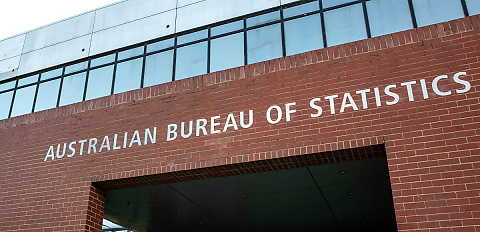The latest Building Approvals data released by the Australian Bureau of Statistics (ABS) has shown a 0.3 per cent decline in the total number of dwellings approved (to 16,606) in February after a 6.9 per cent rise in January (seasonally adjusted).
Brock Hermans, ABS head of construction statistics, said: “Approvals were varied across the building types. Private dwellings excluding houses fell 1.5 per cent, while private sector house approvals were up 1.0 per cent.”
While the monthly change showed a slight drop in approvals, the ABS data revealed a yearly increase of 25.7 per cent, along with annual increases in private sector houses of 5.2 per cent and private sector dwellings excluding houses of 73.1 per cent.
Meanwhile, the total value of residential building rose 5 per cent to $9.65 billion, reaching a record high for the second month in a row, according to the ABS.
This was comprised of a 5.8 per cent increase in the value of new residential building approved (to $8.49 billion) and a 0.3 per cent fall in the value of alterations and additions to $1.16 billion.
The value of non-residential building declined by 16.5 per cent to $4.69 billion, following a larger 21.6 per cent fall in January; however, this was still 2.1 per cent higher than February last year.
Commenting on the data, HIA senior economist Tom Devitt said confidence has been improving “on the back of strong population growth, near-record low unemployment, and recovering real incomes”.
“Low rental vacancy rates and rising rents were bringing investors back to the market. And even before the RBA’s February rate cut, interest rates had been relatively stable since mid-2023,” Devitt said.
“The RBA’s February rate cut will provide a welcome extra boost, but structural reforms are needed to properly address Australia’s housing affordability crisis.
“Medium-to-high density housing activity, in particular, has been around just half its required volumes over the last year, constrained by labour shortages, finance costs and punitive government taxes and regulations.”
While these conditions have drawn improved market conditions back into detached housing, all housing types must contribute to the federal government’s 1.2 million homes by 2029 target, according to Devitt.
Master Builders CEO Denita Wawn echoed this sentiment, saying that more investment in housing supply is needed along with action on reducing supply barriers.
"We have long called for better co-ordination across departments when it comes to investment in building and construction projects,” Wawn said.
“Master Builders supports the Coalition’s Investment Australia [announcement] to reduce regulatory costs and red tape, with a specific working group focused on construction.
“Both major parties are starting to send the right signals as the election campaign unfolds, which reflect policies in our election platform.”
[RELATED: Coalition announces ‘Investment Australia’ to combat red tape]

